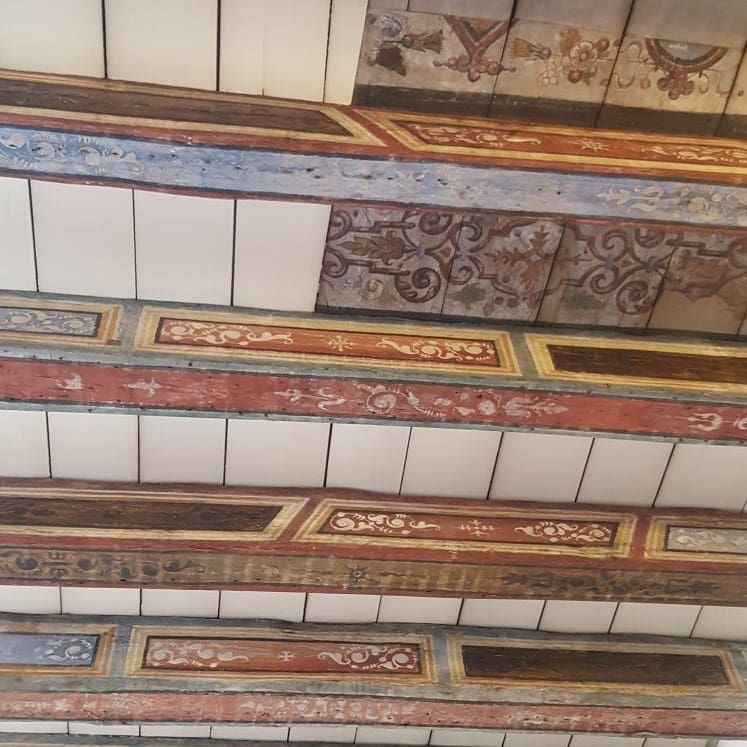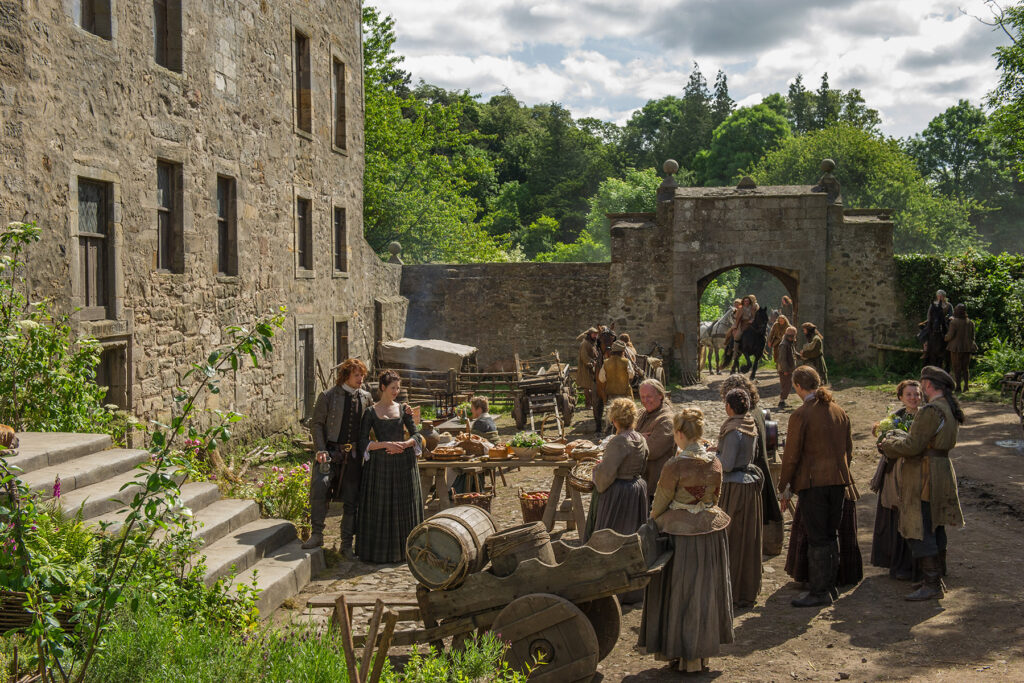Time has mellowed the once-stern exterior of Midhope Castle. It still stands stark, uncompromising, built as all Scottish strongholds were in more turbulent times: a true “tower-house”. But 600 long years have given the building a haunting beauty; a sense of romance pervades the worn stonework and austere landscape.
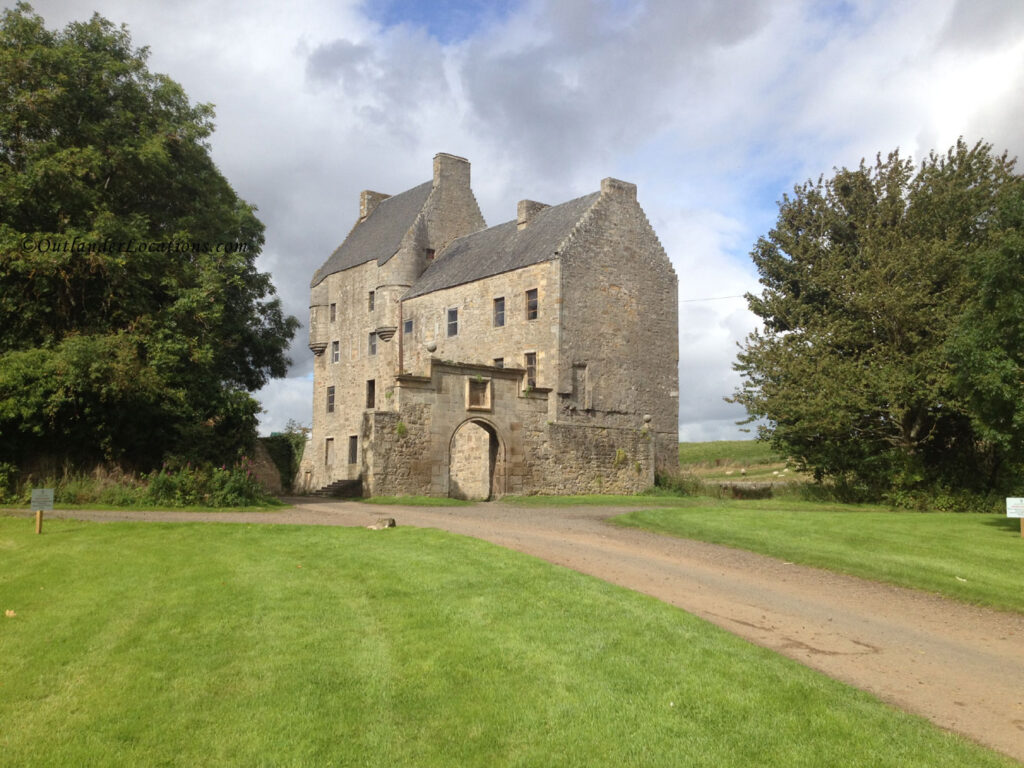
It is this contrast between strength and beauty which led to Midhope Castle’s 21st century fame, having featured as a location-set in Outlander, leading to the site becoming a place of pilgrimage for fans who fell in love with the epic series.
Midhope Castle’s exact ‘founding’ year is lost in the mists of time, but it’s known to have been constructed in the mid-15th century. The name itself varies in documents: “Meedop” appears in the maps of the famous cartographer Blaeu (c.1650). Adair’s maps note “Midhop” (c. 1680). Later, Sir Robert Sibbald referred to “Meidhope” (c.1710).
Battles or lordly-quarrels make up the majority of historical references to ancient lands and buildings, and Midhope Castle is no exception: its first official mentions are in disputes over land boundaries and assets. As Scotland headed towards full-scale rebellion in the 1480s, that saw James IV crowned after death of his father James III of Scotland, Midhope Castle had its own share of troubles…
What Laird worthy of the title wouldn’t take issue with “…the brekin of the said mylne, and the wasting of the profit of the samyn heddertillis sen the tyme of the brekin of her, and the awaye takin of thre pottis, &c.”?! (The breaking of his mill, and loss of profit from it, since the time of the breaking up until now, and the stealing of its containers!) Such was the complaint of the Laird John Martyne, in 1478. Indeed, much of Midhope’s earliest chronicles are concerned with disputes arising because one Henry Graham committed the unforgivable act of dying with no male heir…
Lairds, Heirs, Jacobites… and Manure: Midhope Castle’s historical-timeline
Early 1400s: the lands of Midhope, amongst others, were owned by Henry Graham of Mannerstoun. Without a male heir, his lands passed to his two daughters. One married Robert Livingstone of Drumry. The other married John Martin (or Martyne).
1431: Henry Livingstone (de Lewyngstoun) is on record, styled as Laird of Mannerstoun.
1438: The very first reference to Midhope as a territory is made, in a document describing the formal division of lands between the Martins and Livingstones “upon the high alter of the Parish Church of Abercorn”. John Martin is Laird of Midhope, and is thought to have built the original tower-house around this time.
1458: The first reference to the castle exists in a document concerning resolution of a boundary dispute between John Martin “Laird of Medhope”, and Henry Livingstone.
1475: It seems little progress was made in almost 20 years: another dispute is recorded between Martin and Livingstone on the boundaries of their respective lands.
1478: Further conflict occurred between the two, regarding the mill of Abercorn, which seems to have progressed to destruction and theft: Martin accused Livingstone (and ‘George Hamilton of the Tays’) of breaking the mill, stealing some items, and thus taking away his income.
1478 – continued: John Martin dies, and Midhope Castle and lands pass to Henry Livingstone soon afterwards. Henry himself passes during the following 2 years. Martin’s widow, Lady Christian, however, retains the right to occupy Midhope, and has the use of a portion of its lands according to a contract she signed with a James Livingstone, descendant of John (a 1480 document describes a division of lands between the ‘late’ Henry Livingstone of Mannerstoun and the ‘late’ John Martin of Medope).
1493: One ‘Alexander Hepburn of Whitsome’ was found to be illegally “occupying and manuring the third part of the half of the lands of Midhope”: manuring-rights were those of John Martin’s widow, Christian Martin!
1501: Andrew Martin is John’s heir, but dies only months after his father; his sister Elizabeth is now “Lady of Medhope” – ward of the Livingstones: she is married to one Cuthbert Hume.
1527 – 1537: In 1527 John Livingston granted a charter to Sir James Hamilton of Finnart of half the lands of Mannerstoun and Midhope. Only two years later he surrenders the remainder of his lands to Alexander, Lord Livingstone, in an agreement whereby he would be “maintained in his household with a boy and two horses”.
Elizabeth Hume, neé Martin, follows suit in 1537, selling her lands in Mannerstoun and Midhope to Hamilton too.
1538: King James V confirmed a charter to Sir James Hamilton of Finnart, “of the lands, tower, fortalice, mill and fisheries of Meidhoip, and the lands of Mannerstoun”. The Martin family, founders of Midhope Castle, were not longer a part of its story.
1540: Sir James Hamilton fell from grace. Known as “The Bastard of Arran” due to his illegitimate birth, he was ‘legitimated’ whilst young, and as 2nd cousin of King James V, at one point was one of the most powerful men in Scotland. Having travelled between France and Scotland bearing messages, taking part in numerous famous battles, murdering the Earl of Lennox, surviving a revenge-stabbing himself, and excelling as an architect to boot, James was convicted of treason and executed. His son, James Hamilton of Kincavil, retained Midhope Castle.
1560: Charles Drummond secured rights to “the Medhope Tower” from James Hamilton. Charles and his brother Alexander acquired more Midhope lands two years later. A succession of three Alexander Drummonds are in possession of Midhope Castle. The Drummond family motto is “Per ardua ad astra” – through adversity to the stars.
1573: Alexander Drummond was a servant of the Earl of Huntly. On 7th August 1573, on behalf of the Earl of Huntly, Drummond returned jewels belonging to Mary, Queen of Scots to Regent Morton at Holyrood Palace.
1582: Midhope Castle passes to the succeeding Alexander Drummond, and his wife, Marjorie Bruce. This is the first “formal” document stating the Drummonds in residence, but the lands and castle are known to have been in the family prior to this.
1587: Drummond remodelled the West tower, including building the Bartizan turrets; his initials with those of his wife were engraved on the lintel (now removed from the doorway and built into the gateway). Alexander and Marjorie’s eldest son became known as Robert of Carnock, and was Master of Work to the Crown from 1579 until 1583. “Sir Robert of Midhope”, descendent of the above, is on record in 1647 and 1661 as master of Midhope Castle.
1664: Midhope Castle and lands pass to the Livingstones. (This was not the direct family-line of the Livingstones who squabbled with the Martins so long ago: theirs had likely been a junior branch of the same family though.) George Livingston was the third Earl of Linlithgow, who had come into that title in 1646. He held a significant post in the affairs of the country, becoming a privy councillor after the Restoration, and leading government forces against the Covenanters.
1676: Documents survive signed by George Livingstone at the castle, showing he used it as a residence at some points. He remodelled some aspects of Midhope Castle during his ownership: his initials “G.L.” and crest on the lintel of the present doorway are testimony to his input.
1678: Midhope Castle was acquired by John Hope – who had purchased the lands of Abercorn in 1678 – incorporating it within the Hopetoun Estate. He had extensive work carried out extending and remodelling the castle. In the kitchen, John had an inscription engraved which reads “Aspiret Coeptis Jesus” – May Jesus favour your undertakings. Under his decree, the castle took the shape with which we are now familiar. He was drowned in 1683, coming to Scotland with the Duke of York.
1695: The dovecote is believed to have been constructed at the behest of James Livingstone, 5th Earl of Linlithgow. His initials are carved into the structure. His was a rocky existence: fighting at the Battle of Sheriffmuir on the ‘wrong’ side in the 1715 Jacobite Rebellion led to him losing his title and estates.
1699-1701: The imposing Hopetoun House was constructed less than a mile away from Midhope Castle: the tower-house was never again to be the “seat” of a family. In 1703 John Hope’s son and heir Charles was made the 1st Earl of Hopetoun.
1710: Sir Robert Sibbald described “Meidhope” as a “fine tower house with excellent gardens, one of the seats of the Earls of Hopetoun.” There are few to no records from the following century: it is likely that its neglect began from this time.
1851: Midhope Castle was used to house farm-workers after the building of nearby Hopetoun House. The 1851 census lists 53 people in 10 families living in Midhope, including 4 game keepers, 4 foresters, 2 labourers, a groom, a carter, a gardener, a joiner, and a number of paupers.
1890: The castle was reported by McGibbon and Ross – Scottish architects who published surveys of Scotland’s architectural heritage to be inhabited by ‘Pensioners of the Hopetoun Family’
1926: A report noted Midhope Castle had been subdivided to provide accommodation for estate workers. However, this record fits in with the description of the building’s usage in 1851. By this point the subdivision could have been in place for 75 years or more. This same record describes the building as already being in poor condition.
Sadly, once the stately, opulent Hopetoun House was completed in 1699-1701, Midhope Castle was always going to be a secondary-building, destined to be the “poor relation” on the estate. At some point in the early 20th century, this ancient seat, where Lairds and their Ladies had lived and loved, fought and died for the best part of 600 years, was finally abandoned, and began a rapid descent into dereliction. It seemed as though this once-proud tower-house would end up as no more than ruinous stones half-buried in grassy mounds.
Saved… At The 11th Hour: Midhope Castle’s Restoration
A record from the late 1920s states that Midhope Castle was falling into disrepair. The castle was said to be in a state of “deterioration”, including “a fine oak staircase with twisted balusters, now sadly dilapidated”.
Lovers of heritage will wince, but no work was undertaken to preserve this ancient seat, even after a second report by a visitor was made in the 1960s, when the castle was described as “decaying fast”. Beautiful wall-paintings were noted in this period, but were lost before Midhope Castle’s desperately needed restoration commenced in 1988. By this time, it was a ruinous, windowless shell. Whilst the East Range retained vestiges of roofing, in a very precarious state, the West Tower was roofless.
Restoration work consolidated the castle’s exterior. It saw the surviving roof on the East Range demolished and new roofs created for both sections, as well as the insertion of new window frames into existing openings.
Thankfully, some years prior to this restoration, a painted ceiling was found, removed in its entirety and restored to its former glory. It includes cinquefoil motifs and probably commemorates the marriage of Sir Robert Drummond, who became Laird in 1619, to a Hamilton heiress. It is now displayed in the “Queens Tearoom” – to the left of Holyrood Palace on Abbey Strand.
Clans and Claymores: Outlander – Midhope Castle’s 21st Century Revival
“When the day shall come, that we do part… if my last words are not ‘I love you’ – ye’ll ken it was because I didna have time” – Jamie Fraser, Outlander leadIn 2014, Midhope Castle was propelled into a league of famous Scottish castles only eclipsed by Edinburgh or Balmoral – albeit under a pseudonym! Millions will recognise its rugged exterior as “Lallybroch”, featured as the location in the Outlander TV series, of the main character, Jamie Fraser’s, family home (also known as “Broch Tuarach”).
The popular series – full of fight, fury and passion – captured the hearts and imagination of viewers across the world. The political-intrigues and fierce romances of Jamie Fraser, Claire Randall and other protagonists, in the fiery context of the Jacobite Rebellion, led to a surge of interest in Midhope Castle, resulting in the site being opened to the public.
Devotees of Outlander may be bemused to learn that the interior is described as ‘derelict’, as clever CGI provided some aspects of “Lallybroch” as the family-home of Jamie Fraser in the series.Visitors feel transported simply by being around the ancient dwelling, standing picturesque amidst the rugged Scottish landscape. Imagining the romances and plots taking place behind those greying walls is magical for all those keen to feel close to Outlander action.
Turrets Atop Winding-Stairs: Midhope Castle’s Architecture and Site Features
With a working-farm to the rear of the site, and untouched rural land surrounding it, it’s easy to feel transported back in time facing the stalwart walls and turrets of Midhope Castle. It is a Category “A” listed building, with a wealth of features that testify to its long history.
As with so many ancient seats, the building we see today likely bears little resemblance to the tower-house first built in the 1400s. The oldest parts of the building partly survive in the vaulted basement floor of the tower.
Various owners – Lairds and Earls – made their mark upon Midhope over the centuries, extending or rebuilding aspects of the castle. Key figures include Alexander Drummond, who remodelled the building in 1587, incorporating the turrets. When possession passed to the Livingstones, George Livingstone, third Earl of Linlithgow, had additional work done on the tower-house circa 1664. Only 14 years later in 1678, the castle was acquired by John Hope: he also had extensive work done, raising in height and extending the East Range. The entrance tower was removed, and a new doorway and small courtyard added.
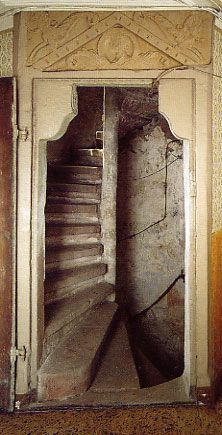
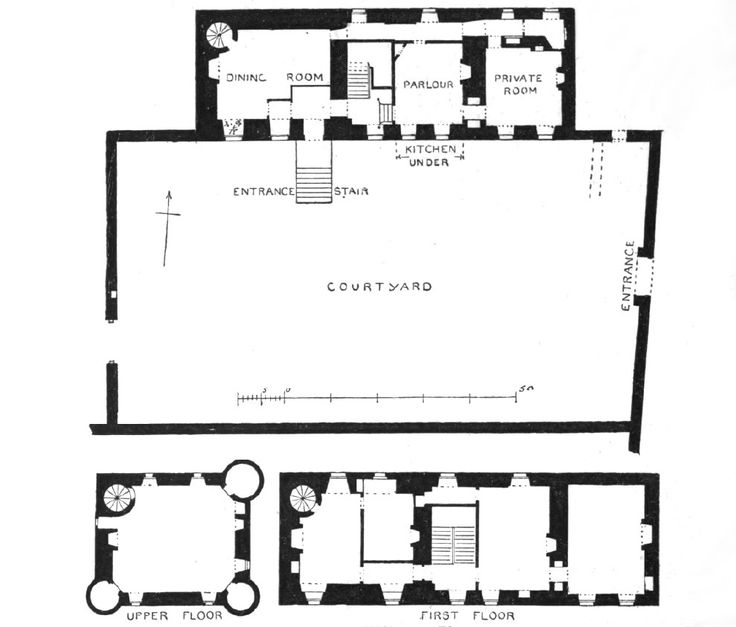
After all these alterations, Midhop Castle took the form we recognise today. It consists of the five-storey West Tower, and a garret. Flanking this is a lower wing – the four-storey East Range, which contained the kitchen. Two-storey Bartizan turrets crown three of the corners of the West Tower – now minus their conical roofs. A cap-house for the spiral stair crowns the fourth. The steep pitch of the roof is typical of tower-houses constructed in that period. The walls of the building form one side of the courtyard, which would have been a beautiful walled garden in its time. An arched gateway protects the courtyard.
A date stone commemorates the rebuilding of the tower with turrets by the new owners, Alexander Drummond and his wife, Marjorie Bruce, in 1587, and includes their initials. This was likely the lintel of the front door but was later replaced and situated at its current location.
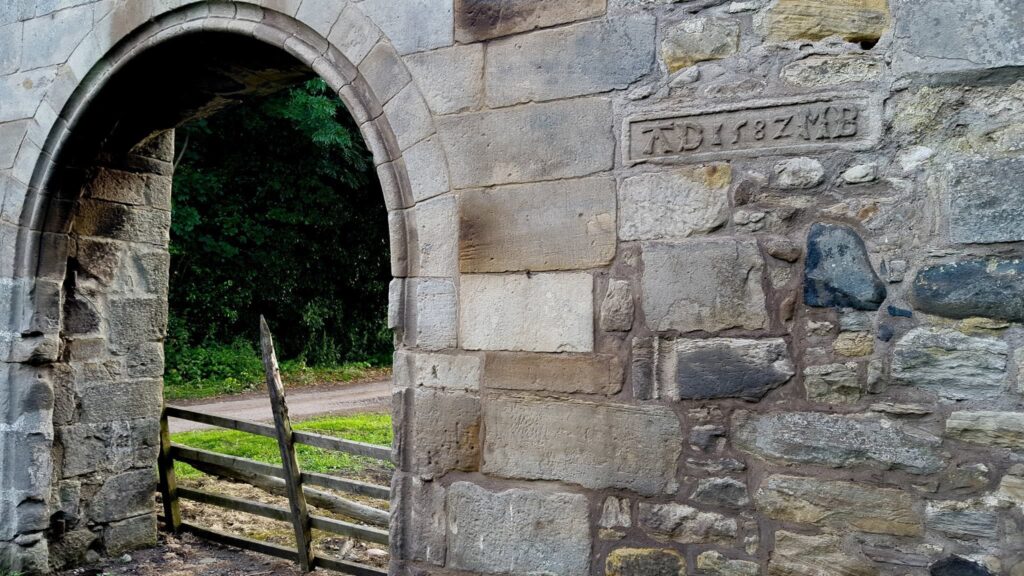
The present doorway and lintel are the work of ‘G. L.’ – George Livingston, third Earl of Linlithgow, who came into that title in 1646 and kept it until his death in 1690.

A double-doocot – a two-chambered dovecote – is also situated at the site, sitting about 140 metres from Midhope Castle itself. This large oblong structure is a Category “B” listed building in its own right, dating from 1695. The two chambers of the doocot contain 993 and 1013 nesting boxes each. The initials ‘J.L.’ can be deciphered on the building, and likely refer to James, fifth Earl of Linlithgow.
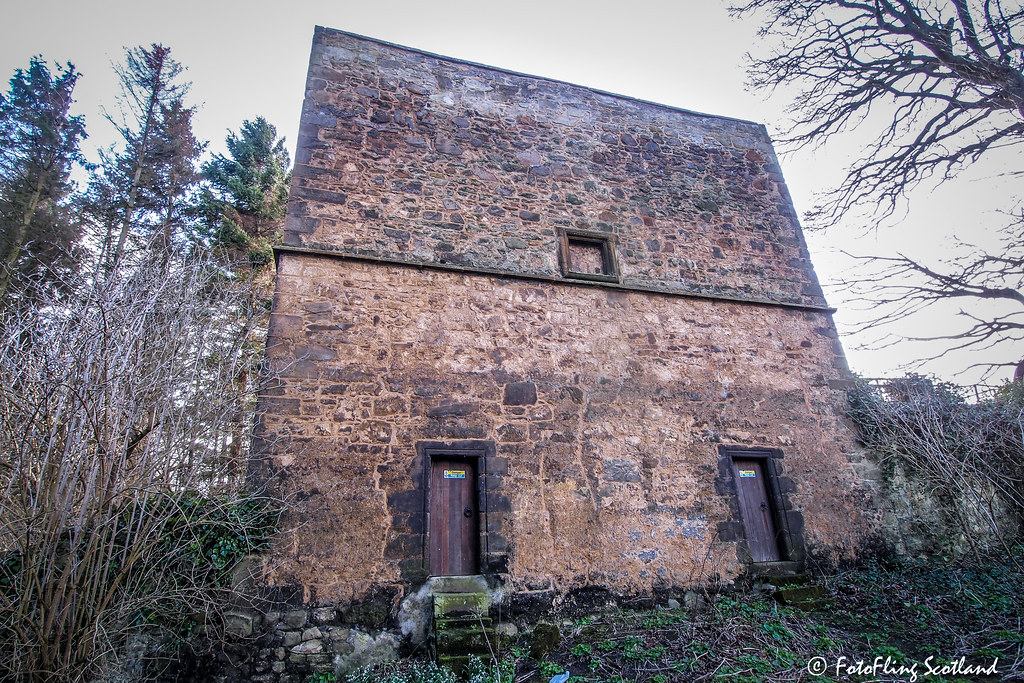
Making a Day Of It: Your Visit to Midhope Castle
Standort: Within the Scottish region of West Lothian, Midhope Castle is situated in the hamlet of Abercorn on the Hopetoun estate, about 4 km (2.5 mi) to the west of South Queensferry, on the outskirts of Edinburgh.. The castle remains part of the extensive Hopetoun private estate. Comprising over 1500 acres, it remains a working-estate.
EH52 6QZ (South Queensferry) is Midhope Castle’s location by postcode. Access is via the minor A904 road, about 1 mile west of Hopetoun House. Use either AA Route Planner or Google Maps to help with route and navigation.
Opening times: The Midhope Castle site is open from spring-time (date confirmed annually) until the end of September: in summer months the site closes at 5pm, and at 3pm at all other times.
Due to farming, filming, or other estate activities, checking the website directly for possible closures is advised prior to visiting. Please note, there are no amenities beyond the carpark and basic toilet facilities.
Booking/ ticket purchase: Book via the Hopetoun Estate website: Midhope Castle – booking & information
Previously, tickets have also been able to be purchased from the Hopetoun Farm Shop. Please check to ensure this method is still available before going. Group visits must be booked in advance via the website.
Prices are subject to change and will be displayed each season on the website. Under-5s go free.
Arrival:
Having booked online, you can bring your email or show your smartphone to the Hopetoun Estate staff-member at the cabin on the Midhope Castle site, and tell them the name of the person who made the booking.
And Remember… To Find the Magic:
The castle’s interior is classed as derelict, and is unsafe for public access. The restored exterior retains its ancient charm. The site’s allure lies in its austere beauty, reminiscent of past ages: soak up its serenity.
Relish the building’s stony features, built on over centuries by successive owners adding wings, storeys and courtyards; engraving their names into the masonry; think of Marjorie Bruce gazing out from her newly built turrets; each nobleman expanding the scope of this tower-house, trying to stake his claim on it – knowing all too well how easy it was to fall from favour.
Imagine, if you will, Outlander hero Jamie Fraser returning to his family home with Claire. Recall the brutality and the romance, the heroism, the plotting, taking place in Lallybroch’s rooms and courtyards, during those turbulent times. Both the fantasy and the realism that the series captures so well feel very near in the shadow of Midhope Castle.
Be sure to see the 17th century dovecote, nestled in the wooded area to the left, as you make your way from the carpark to the castle – and wonder if the future Jacobite, the 5th Earl of Linlithgow, already dreamed and schemed of uprisings as he watched the air flutter with the wings of his 2000 doves.
An hour will suffice to explore the site of Midhope Castle and revel in its rich history – extend it to two if indulging in a picnic, weather permitting! To extend your outing to Midhope Castle into a full day’s worth of activity, consider the popular options for visitors listed below.
West Lothian offers a variety of tourist attractions, from heritage sites to scenes of outstanding natural beauty.
- Hopetoun House: the seat of the Hopetoun estate – within which Midhope Castle sits – this palatial building has been referred to as “Scotland’s finest stately home”. It offers an abundance in terms of architecture, landscaped gardens, art, manuscripts and other artefacts.
- Blackness Castle: this 15th century fortress sits on the shores of the Firth of Forth. Fans of The Outlander may be thrilled to organise a combined visit, as this castle was the set of ‘Fort William’ in the series. It offers panoramic views of the surrounding countryside.
- Linlithgow Palace: the birthplace of Mary, Queen of Scots, this magnificent ruin sits beside Linlithgow Loch. It’s famed for its stunning architecture and picturesque surroundings.
- Five Sisters Zoo: this zoo is home to a variety of animals including meerkats, lemurs and bears. It’s a family-friendly attraction with educational programs and play-areas for children.
- Kelpies: these iconic, 30-metre-high horse-head sculptures are located at the Helix, a parkland near Falkirk. The Kelpies are a symbol of Scotland’s industrial past, and visitors can take guided tours to learn more about their significance.
- Almond Valley Heritage Centre: this family-friendly attraction features a museum, farm and adventure play areas. It’s a fantastic place for children to learn about rural life and interact with animals.
- Beecraigs Country Park: offering outdoor activities such as walking, cycling and fishing, this is a scenic destination with woodlands, a large reservoir and play areas, providing a peaceful escape into nature.
- Jupiter Artland: this contemporary sculpture garden features a diverse collection of art installations set in the woodlands and meadows. It offers a unique and immersive art experience set within natural beauty.
- West Lothian Golf Club: this well-regarded golf-course will afford golf-enthusiasts a fantastic experience, the course being set in particularly picturesque surroundings.

